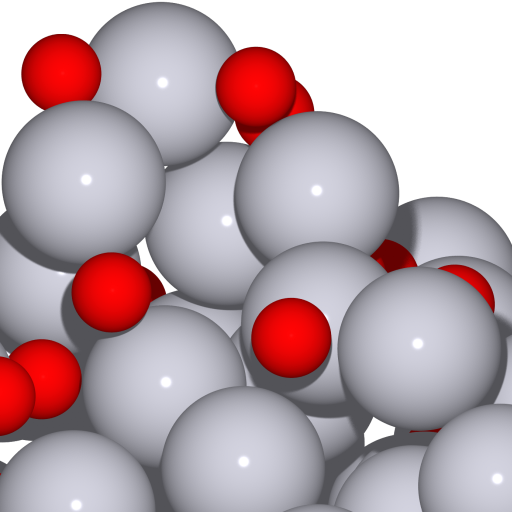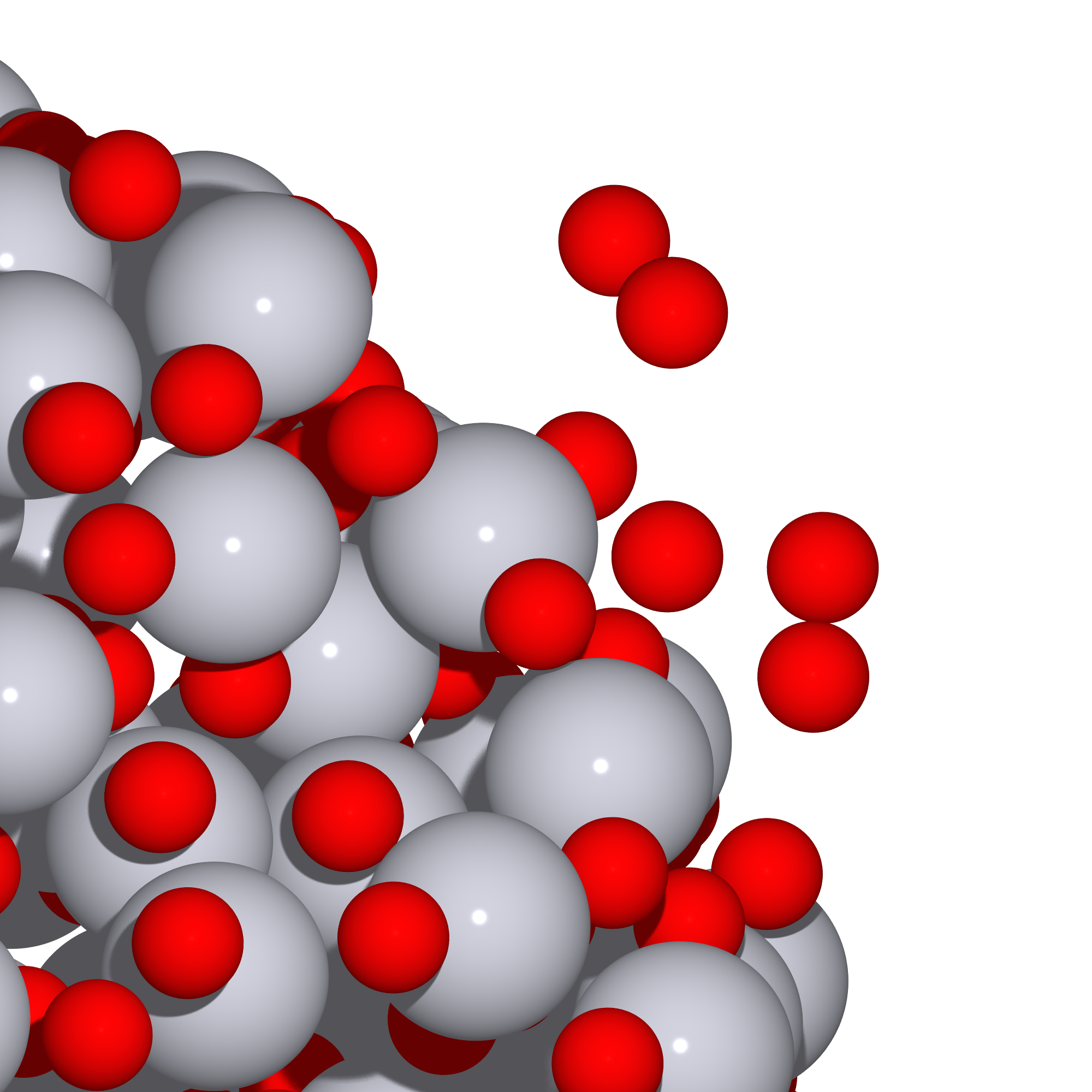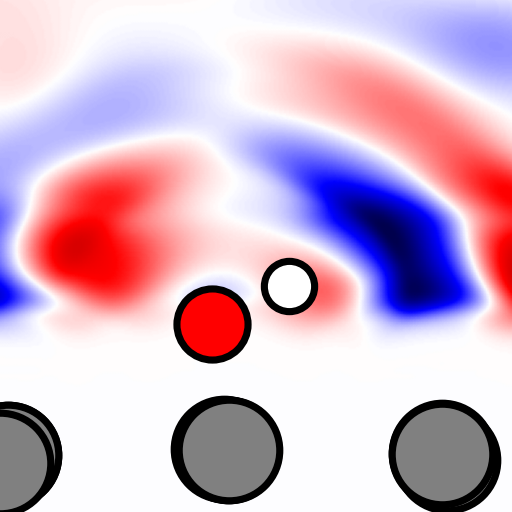publications
2025
-
 Multi-Scale Modeling and Experimental Investigation of Oxidation Behavior in Platinum NanoparticlesTom Demeyere, Husn U. Islam, Tom Ellaby, and 3 more authorsPhysical Chemistry Chemical Physics, Apr 2025
Multi-Scale Modeling and Experimental Investigation of Oxidation Behavior in Platinum NanoparticlesTom Demeyere, Husn U. Islam, Tom Ellaby, and 3 more authorsPhysical Chemistry Chemical Physics, Apr 2025Understanding the oxidation behavior of Pt nanoparticles (NPs) is crucial for developing durable and efficient catalysts. In this study, we investigate the oxidation of a realistic Pt NP, retrieved from scanning transmission electron microscopy (STEM) images. We use a multistep approach combining ReaxFF and MACE-MP-0 forcefields with Density Functional Theory (DFT) calculations. Our Monte Carlo simulations reveal high oxidation of the nanoparticle, with oxygen penetrating deep into the core. We explore the plausibility of these configurations by carrying out XRD, TEM and EXAFS measurements on samples of various average particle sizes. Progressing in our workflow, we find that 100 ns of thermostated dynamics at 350 K using the ReaxFF forcefield leads to the formation of detached Pt6O8 species. To explore the validity of this small platinum-oxide cluster, we first optimize the geometries using the recent MACE-MP-0 forcefield resulting in structures without the species. We then compare both forcefields to DFT calculations showing closer agreement for MACE-MP-0 compared to ReaxFF. Finally, we discuss the electronic structure of our oxidized nanoparticles spanning a whole range of oxygen coverages, finding substantial changes in the Pt-5d and O-2p projected density of states of the platinum structure as the coverage increases. Our findings emphasize the importance of accurately describing the potential energy surface and explicitly modeling oxygen coverage to predict catalytically relevant properties at high potentials. This study aims to provide a foundation for understanding the complex interplay between nanoparticle structure, oxidation state, and catalytic performance, aiming to guide the rational design of advanced catalytic materials.
@article{demeyereMultiscaleModelingExperimental2024, title = {Multi-Scale Modeling and Experimental Investigation of Oxidation Behavior in Platinum Nanoparticles}, author = {Demeyere, Tom and Islam, Husn U. and Ellaby, Tom and Sarwar, Misbah and Thompsett, David and Skylaris, Chris-Kriton}, year = {2025}, month = apr, journal = {Physical Chemistry Chemical Physics}, publisher = {Royal Society of Chemistry (RSC)}, issn = {1463-9076, 1463-9084}, doi = {10.1039/d5cp00134j}, urldate = {2025-04-30}, langid = {english}, } -
 Bridging Oxide Thermodynamics and Site-Blocking: A Computational Study of ORR Activity on Platinum NanoparticlesTom Demeyere, Tom Ellaby, Misbah Sarwar, and 2 more authorsACS Catalysis, Mar 2025
Bridging Oxide Thermodynamics and Site-Blocking: A Computational Study of ORR Activity on Platinum NanoparticlesTom Demeyere, Tom Ellaby, Misbah Sarwar, and 2 more authorsACS Catalysis, Mar 2025The oxygen reduction reaction (ORR) is a key reaction in fuel cells and metal–air batteries, where high overpotentials remain a critical challenge despite extensive research. While experimental studies have revealed the importance of surface oxidation, a unified computational framework capable of simultaneously capturing both the thermodynamic aspects of rate-determining steps and the kinetic effects of site-blocking on the overpotential has remained elusive. In this work, we present a computational approach that bridges this gap by combining grand-canonical Monte Carlo simulations with the MACE-MP-0 foundation model to study the ORR on experimentally reconstructed Pt nanoparticles. This framework enables the systematic investigation of oxidation effects across multiple scales, from atomic-level place-exchange mechanisms to macroscopic kinetic behavior. Our simulations reveal a strong dependence of system thermodynamics on oxygen coverage and successfully predict the place-exchange mechanism onset at 1.06 V vs SHE, in agreement with experimental observations. Through established scaling relations and deletion energy analysis, we quantify both the rate-determining step and the distribution of reactive sites on the oxidized surface, providing insight into the complex interplay between surface oxidation and ORR activity. By linking our results with both theoretical and experimental benchmarks on multiple points, we ensure the viability of our assumptions and approach. Using a simplified kinetic model derived from our simulations, we demonstrate agreement with core experimental observations, illustrating how computational approaches based on foundation models can enhance our understanding of catalytic processes. This work not only provides a comprehensive understanding of oxide effects in ORR but also establishes a versatile computational methodology that can be readily extended to study similar electrochemical processes on other catalytic systems, offering a powerful tool for rational catalyst design.
@article{demeyereBridgingOxideThermodynamics2025, title = {Bridging {{Oxide Thermodynamics}} and {{Site-Blocking}}: {{A Computational Study}} of {{ORR Activity}} on {{Platinum Nanoparticles}}}, author = {Demeyere, Tom and Ellaby, Tom and Sarwar, Misbah and Thompsett, David and Skylaris, Chris-Kriton}, year = {2025}, month = mar, journal = {ACS Catalysis}, pages = {5674--5682}, publisher = {American Chemical Society}, doi = {10.1021/acscatal.5c00321}, }
2024
-
 A Comparison of Modern Solvation Models for Oxygen Reduction at the Pt(111) InterfaceTom Demeyere, and Chris-Kriton SkylarisThe Journal of Physical Chemistry C, Nov 2024
A Comparison of Modern Solvation Models for Oxygen Reduction at the Pt(111) InterfaceTom Demeyere, and Chris-Kriton SkylarisThe Journal of Physical Chemistry C, Nov 2024Solvation effects play an important role in the thermodynamics of catalytic reactions; however, current implicit solvation models often fail to accurately capture specific local effects, such as hydrogen bonding, limiting their ability to systematically incorporate solvation effects into quantum mechanical simulations. In this study, we investigate the Reference Interaction Site Model (RISM) and apply it to the platinum(111) interface, using the Oxygen Reduction Reaction as a case study. We compare RISM to the charge-asymmetric nonlocally determined local-electron (CANDLE) solvation model, which belongs to the class of Poisson–Boltzmann models. Our results demonstrate that RISM, with the appropriately parametrized water model can accurately describe properties of the solvated Pt(111) surface such as solvation free energies, workfunctions, and capacitances and capture subtle effects due to electrolyte concentration and explicit adsorbates. We find that including lone pairs in the water model proves to be crucial for obtaining accurate results, highlighting the importance of water nonbonding orbitals in solvation effects at the Pt(111) interface. Furthermore, RISM enables the computation of previously inaccessible properties, such as the solvent/electrolyte density near charged electrodes, providing valuable insights into the electrochemical double layer structure. Our findings suggest that RISM could serve as a computationally efficient alternative for studying electrode–electrolyte interfaces, paving the way for systematic incorporation of solvation effects into computational studies.
@article{demeyereComparisonModernSolvation2024, title = {A {{Comparison}} of {{Modern Solvation Models}} for {{Oxygen Reduction}} at the {{Pt}}(111) {{Interface}}}, author = {Demeyere, Tom and Skylaris, Chris-Kriton}, year = {2024}, month = nov, journal = {The Journal of Physical Chemistry C}, publisher = {American Chemical Society}, issn = {1932-7447}, doi = {10.1021/acs.jpcc.4c04924}, urldate = {2024-11-12}, langid = {english}, }
2023
-
 A Workflow for Identifying Viable Crystal Structures with Partially Occupied Sites Applied to the Solid Electrolyte Cubic Li7La3Zr2O12Julian Holland, Tom Demeyere, Arihant Bhandari, and 3 more authorsThe Journal of Physical Chemistry Letters, Nov 2023
A Workflow for Identifying Viable Crystal Structures with Partially Occupied Sites Applied to the Solid Electrolyte Cubic Li7La3Zr2O12Julian Holland, Tom Demeyere, Arihant Bhandari, and 3 more authorsThe Journal of Physical Chemistry Letters, Nov 2023To date, experimental and theoretical works have been unable to uncover the ground-state configuration of the solid electrolyte cubic Li7La3Zr2O12 (c-LLZO). Computational studies rely on an initial low-energy structure as a reference point. Here, we present a methodology for identifying energetically favorable configurations of c-LLZO for a crystallographically predicted structure. We begin by eliminating structures that involve overlapping Li atoms based on nearest neighbor counts. We further reduce the configuration space by eliminating symmetry images from all remaining structures. Then, we perform a machine learning-based energetic ordering of all remaining structures. By considering the geometrical constraints that emerge from this methodology, we determine that a large portion of previously reported structures may not be feasible or stable. The method developed here could be extended to other ion conductors. We provide a database containing all of the generated structures with the aim of improving accuracy and reproducibility in future c-LLZO research.
@article{hollandWorkflowIdentifyingViable2023, title = {A Workflow for Identifying Viable Crystal Structures with Partially Occupied Sites Applied to the Solid Electrolyte Cubic Li7La3Zr2O12}, author = {Holland, Julian and Demeyere, Tom and Bhandari, Arihant and Hanke, Felix and Milman, Victor and Skylaris, Chris-Kriton}, year = {2023}, month = nov, journal = {The Journal of Physical Chemistry Letters}, volume = {14}, number = {45}, pages = {acs.jpclett.3c02064}, issn = {1948-7185, 1948-7185}, doi = {https://doi.org/10.1021/acs.jpclett.3c02064}, urldate = {2024-02-05}, langid = {english}, }